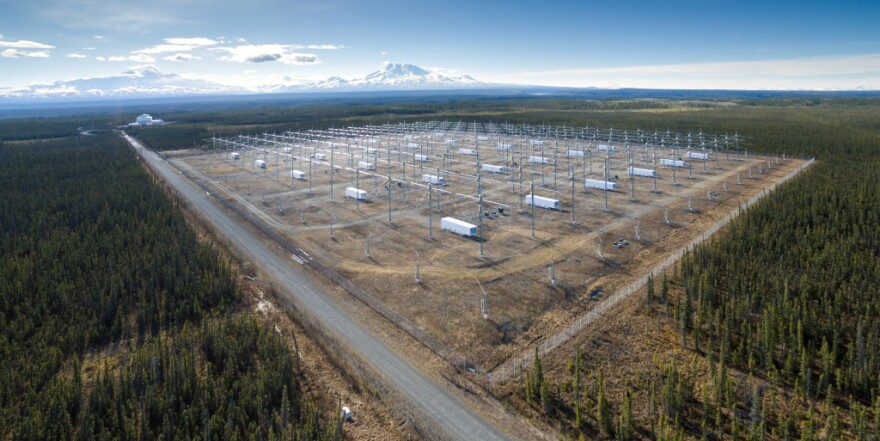The High Frequency Active Auroral Research Program or “HAARP” facility is gearing up for its busiest season since the University of Alaska Fairbanks acquired the Gakona-area atmospheric experimentation station from the Air Force.
HAARP Director Jessica Matthews says she and her staff and UAF officials are all pretty excited about the third and biggest research campaign the HAARP has hosted since the Air Force handed the facility over to the university in 2015.
“This one is by far the largest and longest campaign that we’ve had,” she said in an interview Monday. “It’s scheduled for the 6th to the 14th. And we have about 43 hours of funded research that’s going to be going on this spring.”
During the campaign, top-level research agencies will be paying to use the upper-atmosphere research observatory, which is operated by the UAF Geophysical Institute.
“For this particular campaign, the funding agencies are Los Alamos National Lab, the Department of Energy, the Naval Research Lab, Air Force Research Lab and the National Science Foundation,” she said.

The organizations will use HAARP’s array of dozens of antennas, powerful radio-frequency transmitters and advanced monitoring instrumentation to conduct their experiments – which are similar to the kinds of applied research that’s been conducted there for more than a decade.
“The goal of the research is the same, which is basically conducting fundamental research or study of the physical processes that are taking place at the very highest portions of our atmosphere, which is called the ionosphere.”
Matthews says she’s hopeful HAARP’s will attract more world-class research for its fall research campaign. She’s hopeful the university will by year’s end gain title to the 1,000 acres on which the Air Force opened the facility in 2003 for some $300 million. A facility which the university now operates on a shoestring.
“This is a large program,” she said. “The Air Force ran the program for about $7 million a year. The university is really doing an extraordinary job and we’re running to just at about $2 million a year.”
Matthews says she and her staff are planning this year’s open house, scheduled for August 25th.



